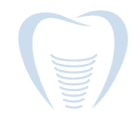Steve Q. is a 62-year-old male who presents for extraction of tooth #19. The patient appears anxious and reports to have a history of high blood pressure. During his consultation his blood pressure read 173/89. The patient reports he forgot to take his metoprolol this morning because he was in a rush to get out of the house.
Following the administration of 2 carpules of 2% lidocaine with epinephrine 1/100,000 via IAN and Buccal, the patient appears diaphoretic and increasingly anxious. The anxiety develops into shooting pain along his left arm and crushing chest pain, with a blood pressure of 227/115.
How would you proceed?
- Place the patient in a comfortable position
- Give patient 100% oxygen from nasal cannula.
- Administer Morphine
- Administer Oxygen
- Administer Nitroglycerin
- Administer Asprin 325mg
This acronym can be remembered as MONA. Morphine will decrease the patient’s anxiety and emotional response to pain. Oxygen via nasal cannula will allow a patient to maintain adequate oxygen level for delivery of oxygen to the myocardium. Nitroglycerin allows for arterial and venous dilatation to decrease the workload of the heart and reduce myocardial oxygen demand. If the patient does not improve, call 911 emergency services.
Multiple factors may have contributed to this patient’s clinical scenario. The first contributing factor would be that the patient didn’t take their metoprolol, thus the patient not being well controlled. The second contributing factor would be the administration of epinephrine in the presence of a non-selective beta-blocker such as metoprolol. If a patient on a nonselective beta-blocker receives a systemic dose of epinephrine, the beta-blocker prevents the vasodilation, leaving unopposed alpha vasoconstriction. The resulting hypertensive reaction can be large, with systolic pressure well over 200 mm Hg.
As dentists we know the dental chair can be a stressful experiences. The dental team should attempt to make the experience as calm and as relaxing as possible. This begins from the initial patient phone call, to the patient’s very first visit to the office. All the team members should be warm, friendly, and comforting. The dentist should also be a team leader contributing to the patients experience by explaining the procedure and reassuring the patient. In addition the dentist should be aware of the medications their patients are taking and how it interacts with any medication we may administer.
Hypertension is a chronic medical condition in which an individual has elevated blood pressure in the arteries. It is categorized as:
- Normal blood pressure: <120/80
- Hypertension stage 1 120-139/80-99
- Hypertension stage 2 >140/100
It is classified as primary (essential) or secondary high blood pressure. Risk factors include: excess salt, body weight, smoking and alcohol. Patients should be approached carefully and evaluated appropriately prior to treatment to assure their safety.
Posted on behalf of
23451 Madison St #120
Torrance, CA 90505
Phone: (310) 373-0667
Monday - Friday 8AM - 5PM
